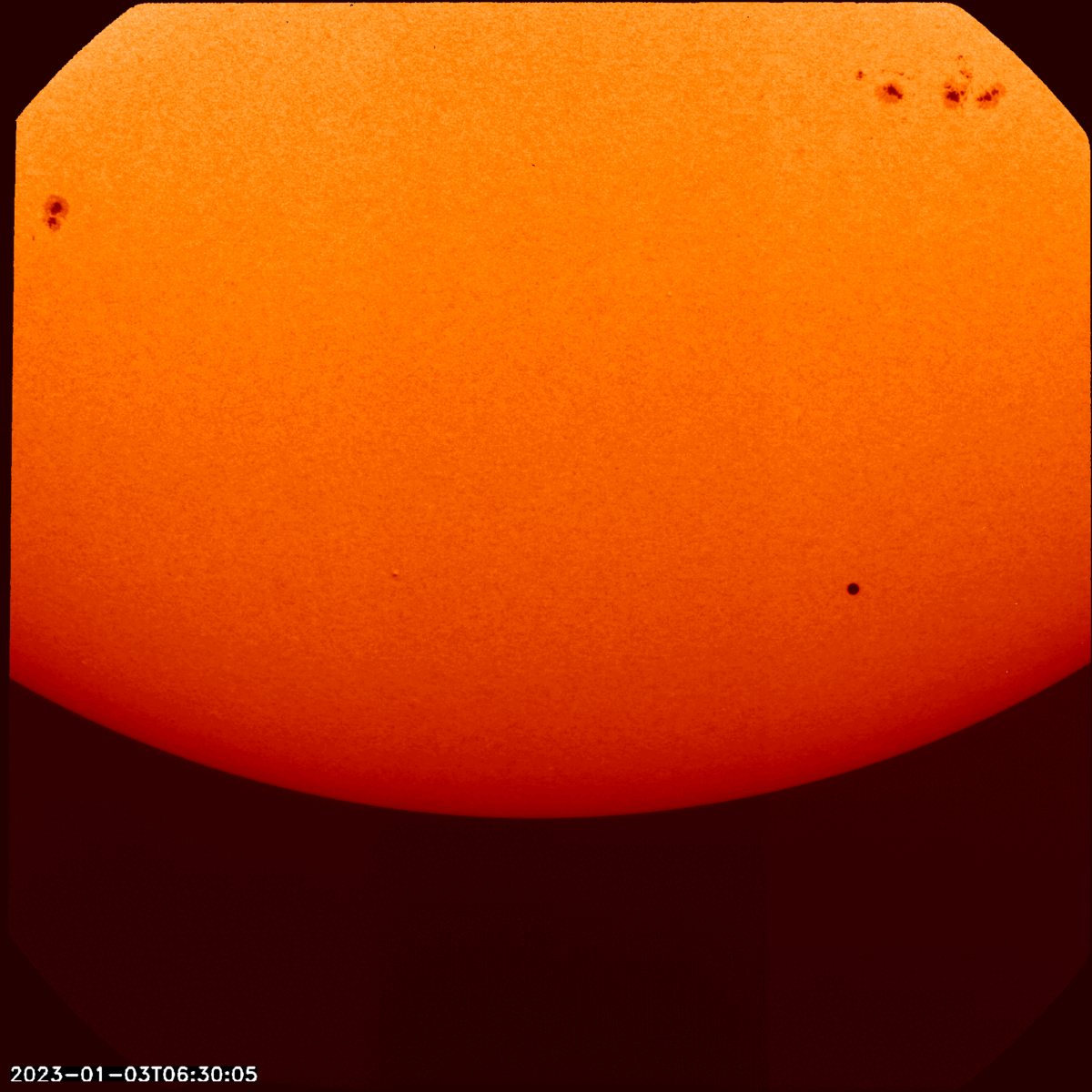On January 3, 2023, Solar Orbiter witnessed a transit of Mercury. The smallest and innermost planet of our solar system was in front of the Sun from the vantage point of the space mission, which is a collaboration between the European Space Agency and NASA. Researchers used the opportunity to check all the instrumentation on board.

The planet Mercury can be seen move (middle to left) across the solar disk. Image Credit: ESA & NASA/Solar Orbiter/PHI Team
Mercury is starkly dark against the solar disk, so an ideal instrument shouldn’t get any signals from it. However, the real ones on Solar Orbiter do, and the team can use these to measure a quantity known as the point spread function. The better this is known, the better the data scientists can get from Solar Orbiter.
“It is a certified black object travelling through your field of view,” Daniel Müller, Solar Orbiter Project Scientist at ESA, said in a statement.
The Polarimetric and Helioseismic Imager (PHI) snapped Mercury moving across the Sun. The Extreme Ultraviolet Imager (EUI) saw it moving beyond the disk, and across the plasma in the solar atmosphere. The Spectral Imaging of the Coronal Environment (SPICE), looked at four specific wavelengths of the Sun, which track different elements (neon, carbon, hydrogen, and oxygen) at different places in the atmosphere.
“It’s not just looking at Mercury passing in front of the Sun, but passing in front of the different layers of the atmosphere,” explains Dr Miho Janvier, Institut d’Astrophysique Spatiale, France, the SPICE deputy project scientist who is currently on secondment to ESA.
Solar Orbiter continues to do amazing science and will be the first mission to eventually observe the polar regions of the Sun.
Source Link: Watch Mercury Crossing The Sun In Splendid Solar Orbiter Footage